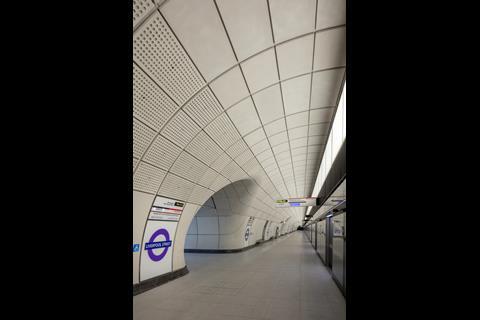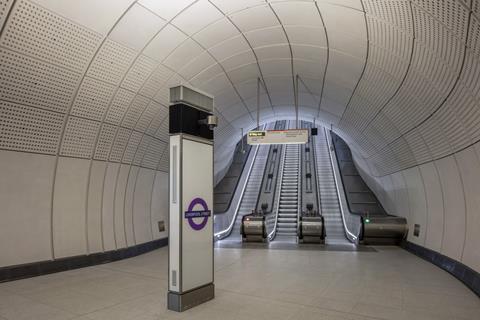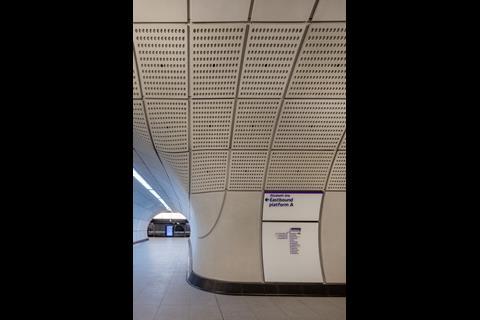The Elizabeth Line’s Stirling Prize triumph exemplifies Britain’s capacity to deliver transformative, forward-looking infrastructure through exceptional design and collaboration. Celebrated for its innovative architecture and seamless integration into London’s transport network, the project not only enhances daily commuting but also serves as a powerful beacon for regional development and economic revitalisation across the nation, write Ben Flatman

The Elizabeth line’s Stirling Prize win is far more than a celebration of architectural excellence. It is a profound statement that Britain, when it chooses to, can still deliver first-class infrastructure that is optimistic, forward-looking, and transformative. In a time when narratives of British decline seem pervasive, the Elizabeth line stands as a powerful rebuttal – proof that when we harness our collective expertise, we can create civic infrastructure that not only serves but uplifts.
The Elizabeth line is not just a feat of engineering and design; it is a living example of how civic, economic, and social infrastructure can be beautiful, functional, and inspiring. The success of this project is underpinned by design brilliance that elevates it far beyond the often grimly utilitarian environments so typical of our public transport systems. It demonstrates how thoughtful architecture can shape the daily lives of millions, providing not only a practical service but also an environment that enhances well-being and encourages connection. The stations – from their uncluttered platforms and intuitive wayfinding to the subtle shifts in lighting – offer an experience that is calming, uplifting, and efficient.
As Grimshaw partner Neill McClements remarked when he showed me around the new line just before it opened, “it’s quite a unique experience designing for such a long construction programme.” His understated point underscores the ambition and long-term commitment that projects like this demand. The ability to stay the course, navigating changing political contexts, engineering hurdles, and cost challenges, is critical to the success of major infrastructure. The potential reward is a transport network that not only looks to the future but also integrates seamlessly into the existing fabric of the city.
The Stirling Prize often sends a political message, and this year is no different. It demonstrates that when Britain has the political will and confidence to get its act together, it has a wealth of experience and visionary designers capable of elevating the everyday experience of travel. The Elizabeth line is more than a transport network – it is the infrastructure that enables a connected, thriving urban environment in which people, culture, and business can flourish. Its success should inspire those who doubt Britain’s capacity for large-scale, transformative projects.
The Elizabeth line is also a belated but welcome realisation of regional transport infrastructure – the type of spatial planning that has long been needed in the UK. By allowing London to tap into the workforce and networks of its wider area, the project echoes the success of systems like the Réseau Express Régional (RER) in Paris, which for decades has connected the city to its surrounding regions, allowing people to live further out while remaining closely connected to the urban core. The lesson here is clear: to prosper, Britain must adopt a similar approach to spatial planning, one that extends beyond London to other cities in desperate need of connectivity.
The Elizabeth line should serve as an inspiration to those who fear Britain is destined for managed decline. London has undoubtedly benefited from significant investment and regional planning – now, that investment must be extended to the rest of the country. Cities in the north of England, such as Leeds, which is one of the largest cities in Europe without its own metro system, are in urgent need of reliable, fast train networks. Many of these cities rank among the poorest in western Europe, yet they hold the potential to compete on the global stage. Reducing travel times and improving connectivity between our major regional cities is not just about convenience – it is about creating the economic interconnectedness that can generate the kind of critical mass of activity needed to drive prosperity.
The recent truncation of HS2 was a tragic, short-term, and defeatist decision that sent a damaging signal about the country’s willingness to invest in its future. The Elizabeth line’s Stirling Prize win is a furious riposte to those who believe Britain is no longer capable of building the infrastructure it needs to thrive. It shows us what is possible when we commit to bold, forward-looking projects.
A critical point that cannot be overlooked is the role of the wider architectural and design team. While Grimshaw, Maynard, Equation, and AtkinsRéalis were the core team recognised in the Stirling Prize nomination, the project’s success also rests on the shoulders of the many other architects and designers who contributed to individual stations. This does not diminish the role of Grimshaw or Maynard but highlights the vast depth of transport expertise within UK practices. The Elizabeth line exemplifies the kind of broad, multi-disciplinary collaboration that is required to deliver infrastructure on this scale. It is a testament to the talent that exists within Britain’s architectural community.

This project also carries a personal resonance for me. At the official opening of the Elizabeth line at Paddington Station on 17 May 2022, my daughter, representing her central London primary school, had the privilege of presenting a bouquet to Queen Elizabeth II, at one of the late queen’s last public engagements. The excitement and enthusiasm she and her classmates felt for this new line were palpable – a powerful reminder that great transport infrastructure can still inspire and delight, just as it did for the Victorians who bequeathed us so much of the railway infrastructure that continues to shape our landscapes and sustain our economy. If we are to secure a bright future for our children, this generation must rediscover its belief in the power of architecture and engineering to transform lives.
Now that the Elizabeth line is open and bustling with activity, the architects can finally witness how the public engages with the spaces they worked so hard to design. Neill Clements shared his excitement about this, saying, “The one thing I just can’t wait to see is the space come alive with people.” The line has more than lived up to these expectations, transforming the experience of commuting for thousands each day. Julian Robinson, head of architecture for the project, summed up the long-term ambition that drove the design when he said to me: “The objective was to move London forward in its transport architecture” and “to leave a civic legacy for the next 120 years.” The Elizabeth line is already doing just that, setting a new standard for urban infrastructure and creating a lasting impact on how Londoners – and future generations – experience the city.
The Elizabeth line stands as a beacon of what we can achieve when we believe in ourselves – and in the ability of our architects and engineers to get the job done. It is a call to action, a reminder that our future is not fixed, and that with vision and investment, we can build a nation that thrives.
>> Also read: Building study: the Elizabeth line – a welcome civic legacy designed to last 120 years































1 Readers' comment